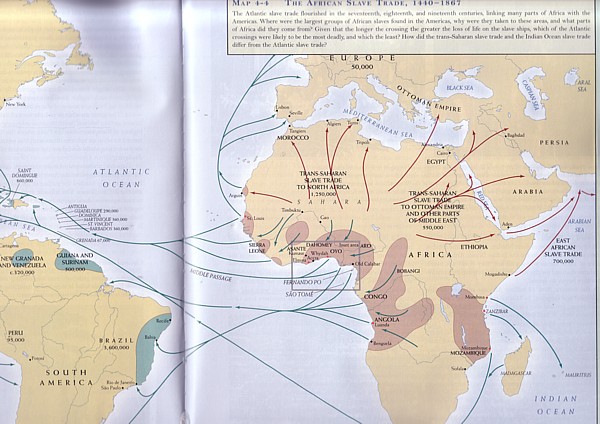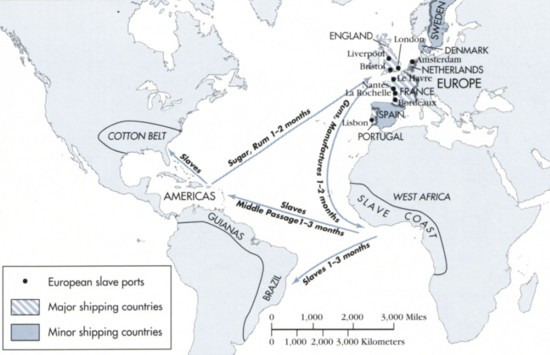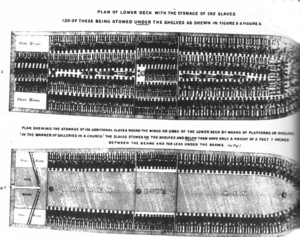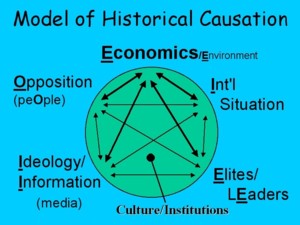1. Briefest History of Slavery in the World Historical Context (back to top)
I began with a discussion of the information contained on the map in the textbook (see below):
- Slavery is ubiquitous throughout all societies in all epochs of world
history, but it has taken a wide variety of forms.
- In some, slavery is a status that can be acquired and removed (like marriage, but not voluntary), with "domestic" slaves fulfilling many of the same duties as non-slaves around them.
- Chattel slavery, where slaves are property that can be bought and sold, is one of the most pernicious forms. It was the predominant form in the transatlantic trade from Africa. (However, indentured servitude of Europeans, for example, was also common in the earlier settlement period of the northern North American colonies.)

The text of the powerpoints follows as bullets below; some important points I wanted to make with that information are boxed at right.
- Existed since dawn of recorded history
- urban tasks in ancient Egypt (pyramids)
- Types:
- Domestic/reproductive vs. productive slavery
- Slavery as status vs. chattel slavery
- Timeline Europe/Africa:
- ancient Egypt, Greece and Rome had slaves
- longstanding Arab slave trade in Africa prior to European contact
- Portuguese: 1441 Africa to Lisbon
- Spanish: 1505/19 production in Hispaniola
- British colonies: 1619 to Jamestown settlement (tobacco; plantation system)
Slavery statistics (see Equiano timeline, pp. 197-200; also textbook pp. 130-136)
| I talked at some length about how the aggregate numbers of slaves and casualty rates during the transatlantic "Middle Passage" have been computed, and how until fairly recently they were all traceable back to a figure given by an 19th century anti-slavery advocate. Current figures are based on a huge database comprised of all the shipping records that could be located. |
- 1700-1800: the worst slave trade century
- 1519-1890s: 9,300,000 total [8.5-12 million]
- 1700-1800: 6+ mio.=2/3 of total in this one century. That breaks
down to:
- 50,000-90,000 slaves per year
- 1760s: 63,500 (annual average over the decade)
- 1770s: 58,000
- 1780s: 89,000
- 1790s: 76,000 (why did the number drop?)
[I argued that it was due to war and revolution, NOT a decline in profitability]


 :
Essay on the Impolicy of the African Slave Trade
:
Essay on the Impolicy of the African Slave Trade